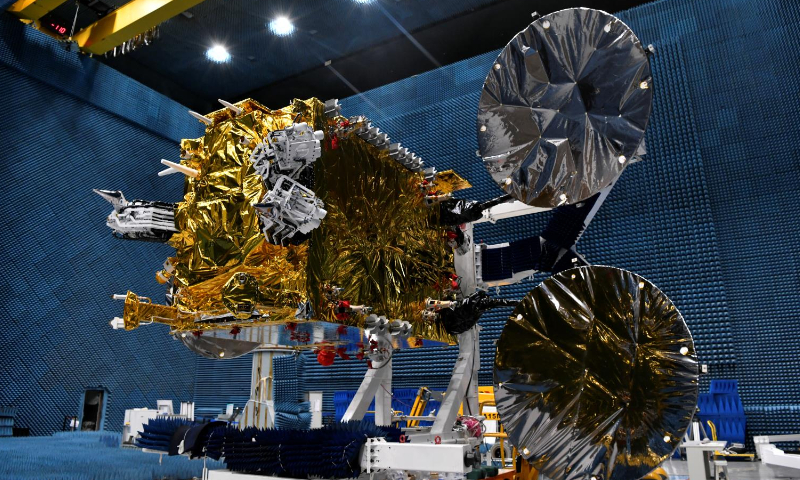
APSTAR-6E Communications Satellite Photo: Courtesy of China Academy of Space Technology
Marking a good start to another ambitious year for China's space industry, the country successfully carried out two launch missions from different launch sites on Friday, sending China's first all-electric propulsion communications satellite to a preset orbit via a Long March-2C carrier rocket and three other satellites to a designated orbit via a Long March-2D vehicle.
At 02:10 am on Friday, the Long March-2C carrier rocket lifted off from Xichang Satellite Launch Center in Southwest China's Sichuan Province, sending the APSTAR-6E Communications Satellite into orbit to provide high-quality communication services for users in Southeast Asia, the Global Times learned on Friday from China Great Wall Industry Corporation (CGWIC), a subsidiary of China Aerospace Science & Technology Corporation (CASC).
The satellite contains 25 Ku-band user beams and three Ka-band gateway beams with a 30Gbps payload capacity. It has a designed lifespan of 15 years and will be positioned at 134°E co-located with two other communication satellites.
Focusing on the customized payload market in Southeast Asia, the APSTAR-6E satellite will provide cost-effective high throughput communication services.
The APSTAR-6E satellite is the new generation of all-electric propulsion commercial satellites, and also the first Chinese satellite to achieve autonomous orbit transfer. The successful launch of the APSTAR-6E satellite marks a step into a new era of high-capacity and low-cost satellite platforms, and improves competitiveness in the international market, according to a statement CGWIC sent to the Global Times.
Also on Friday, at 3 pm, the Long March-2D sent the Yaogan-37 remote sensing satellite along with two other small test satellites into orbit from the Jiuquan Satellite Launch Center in northwestern China's Gobi Desert.
Dubbed the "golden rocket" in the Long March family, the Long March-2D launch vehicle is expected to perform 13 launches out of some 50-plus mission launches scheduled for 2023.

